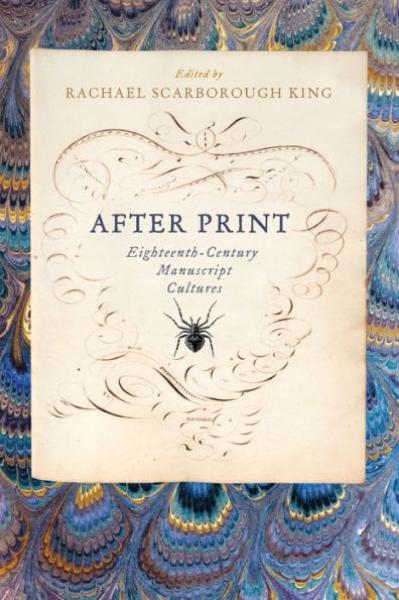Description
The eighteenth century has generally been understood as the Age of Print, when the new medium revolutionized the literary world and rendered manuscript culture obsolete. After Print, however, reveals that the story isn't so simple. Manuscript remained a vital, effective, and even preferred forum for professional and amateur authors working across fields such as literature, science, politics, religion, and business through the Romantic period.
The contributors to this book offer a survey of the manuscript culture of the time, discussing handwritten culinary recipes, the poetry of John Keats, Benjamin Franklin's letters about his electrical experiments, and more. Collectively, the essays demonstrate that what has often been seen as the amateur, feminine, and aristocratic world of handwritten exchange thrived despite the spread of the printed word. In so doing, they undermine the standard print-manuscript binary and advocate for a critical stance that better understands the important relationship between the media.
Bringing together work from literary scholars, librarians, and digital humanists, the diverse essays in After Print offer a new model for archival research, pulling from an exciting variety of fields to demonstrate that manuscript culture did not die out but, rather, may have been revitalized by the advent of printing.
Contributors: Leith Davis, Simon Fraser University * Margaret J. M. Ezell, Texas A&M University * Emily C. Friedman, Auburn University * Kathryn R. King, University of Montevallo * Michelle Levy, Simon Fraser University * Marissa Nicosia, Penn State Abington * Philip S. Palmer, Morgan Library and Museum * Colin T. Ramsey, Appalachian State University * Brian Rejack, Illinois State University * Beth Fowkes Tobin, University of Georgia * Andrew O. Winckles, Adrian College
Ramsey, Appalachian State University * Brian Rejack, Illinois State University * Beth Fowkes Tobin, University of Georgia * Andrew O. Winckles, Adrian College
This fine collection of essays makes a resounding case for editor Rachael Scarborough King's claim that post-Restoration manuscript practices not only "did not die out," but were "revitalized" as part of a "multimedia" eighteenth century. Covering an impressively wide range of contexts in which manuscript production flourished--from sociable literary exchanges, to circles of Methodist women resisting that sect's exclusion of women from leadership roles, to natural history networks creating new knowledge and science networks authorizing the theories of a self-taught Benjamin Franklin, to the circulation of news about the 1688 political crisis--this book is an important intervention in literary history, media studies, and the history of science. A final set of essays also demonstrates the exciting potential of digital humanities and creative making approaches to drive manuscript studies forward and into the public sphere.
--Betty Schellenberg, Simon Fraser University, author of Literary Coteries and the Making of Modern Print in England, 1740-1790After Print makes an important contribution to our understanding of the use of manuscripts for literary and scientific purposes in the transatlantic Anglophone culture of the seventeenth and eighteenth centuries. The strength of this collection lies in its diversity of both subject matter and methodology, accomplishing King's objective of opening an important and exciting field in eighteenth-century literary history and the history of the book. None of this has been done before.
--George Justice, Arizona State University, author of The Manufacturers of Literature: Writing and the Literary Marketplace in Eighteenth-Century England
Product Details
- University of Virginia Pr Brand
- Mar 31, 2020 Pub Date:
- 0813943485 ISBN-10:
- 9780813943480 ISBN-13:
- 350 Pages
- 9.02 in * 5.98 in * 0.78 in Dimensions:
- 1 lb Weight:




